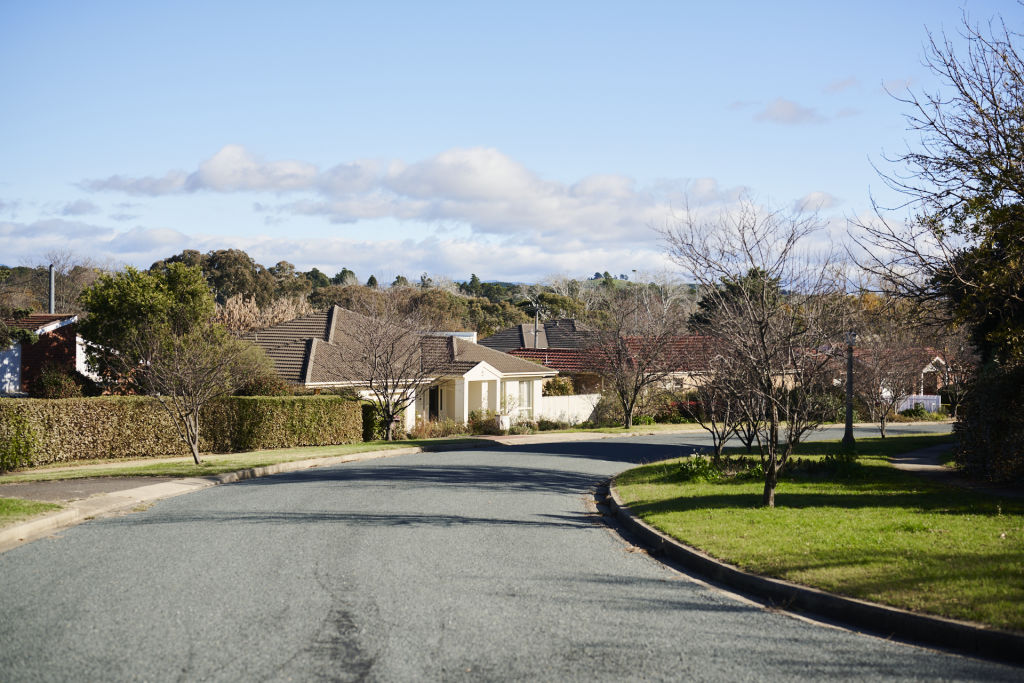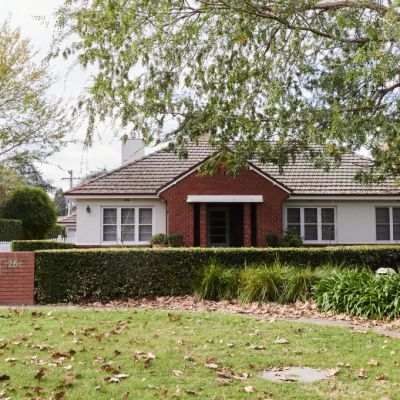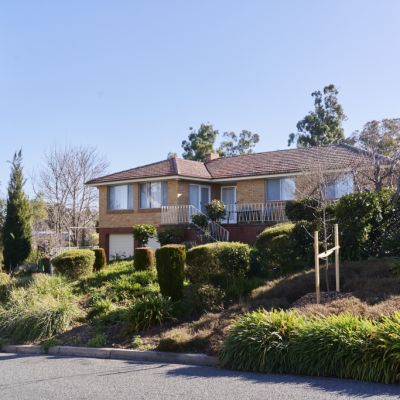Inner South leads auction clearance rate decline in Canberra

Canberra’s Inner South region is at the forefront of the capital’s decline in auction clearance rates, according to new data, indicating that the once-popular sales method is gradually losing its appeal.
Canberra’s overall auction performance measured 52.9 per cent in April, according to the Domain Auction Report – April 2023, down 0.2 percentage points from the previous month and down 16.2 percentage points year-on-year.
In Canberra, there was an auction volume of 303 during the month, of which 136 sold at auction, 95 passed in, 16.7 per cent sold prior and 10.1 per cent were withdrawn from the market.
The Inner South drove that decline with an auction clearance rate of just 34.5 per cent in April, down 36.7 percentage points year-on-year – Canberra’s largest decline.
This was followed by Woden Valley, whose clearance rate was 38.1 per cent in April, down 23.7 percentage points year–on–year.
Domain chief of research and economics Dr Nicola Powell said while the capital’s auction performance was not as strong as auction-centric cities like Sydney and Melbourne, it wasn’t all doom and gloom.
Clearance rates by region
State
Region
Clearance rate
Annual change
ACT
Belconnen
67.3%
-5.4ppt
ACT
Gungahlin
51.0%
-22.9ppt
ACT
Inner North
41.4%
-19.6ppt
ACT
Queanbeyan
33.3%
-10.3ppt
ACT
Inner South
34.5%
-36.7ppt
ACT
Tuggeranong
55.0%
-10.9ppt
ACT
Weston Creek
65.2%
-10.6ppt
ACT
Woden Valley
38.1%
-23.7ppt
“It’s been around 53 per cent for the past two months,” she said. “While that does seem weak, it’s a good outcome because it shows that we’re starting to see some kind of bottom trying to be met.
“Canberra had a strong auction market that really dominated 2020 and into 2021 and the very early part of 2022. What we have seen since is a steep decline in the clearance rates.
“While we have had a decline in clearance rates over the last year, in 2022, that clearance rate would’ve been about 30 percentage points lower from the year before … so the reduction in that rate is easing on an annual basis.”
The capital’s falling clearance rate is in line with the overall decline in its median house price, which fell 8.4 per cent year-on-year to $1,047,112.
Speaking on clearance results in the Inner South, Powell said the result was indicative of market conditions in the region.

“Almost one-third of auctions [were] withdrawn in the Inner South, which is really high and that does weigh on clearance rates, which is why it is weaker compared to other regions,” she said.
Alexander Smout of Belle Property Canberra, who specialises in the Inner South, said he was not surprised by the figures, noting that he couldn’t “remember the last time I had a handful of bidders on a property in the Inner South”.
“We’d usually get one or two [bidders] and any more than that meant we might have a good auction,” he said.
“The lower price points of the market tend to tick over at auction. The Inner South is one of the most sought-after areas … but we’re not getting the same prices we were getting 12 months ago.”
Demand for property isn’t as high as it was in the last few years, said Steve Lowe of Agent Team Canberra, so “the fear of missing out is also not as great as it was”.
“For a lot of buyers, they’re now taking their time to find the right property,” he said. “Buyers … come to [an] auction and if it’s not going for a reasonable price, they’re happy to either let it go or negotiate afterwards or continue their search. There’s no hurry for them.”
Lowe said while auctions remained a favourite Saturday spectator sport for onlookers, many sellers were happy to sell through private negotiations.
“If we don’t have enough interest then we’ll advise our sellers to withdraw it from auction and advertise it with a price or by negotiation, which allows a more flexible method of sale for buyers who want to make offers subject to finance or subject to the sale of their property,” he said.
“It’s just in the current market; it’s just a little bit more favourable to negotiate a deal rather than see to it at auction.”
Smout added that if there was a genuine buyer prior to auction, the vendors were more likely to accept a pre-auction offer.
“We’re seeing a lot more buyers pull out the night before … so once we get a really good buyer in, or even if we only have one buyer on the day, we’d negotiate solely with that buyer,” he said.
We recommend
We thought you might like
States
Capital Cities
Capital Cities - Rentals
Popular Areas
Allhomes
More









